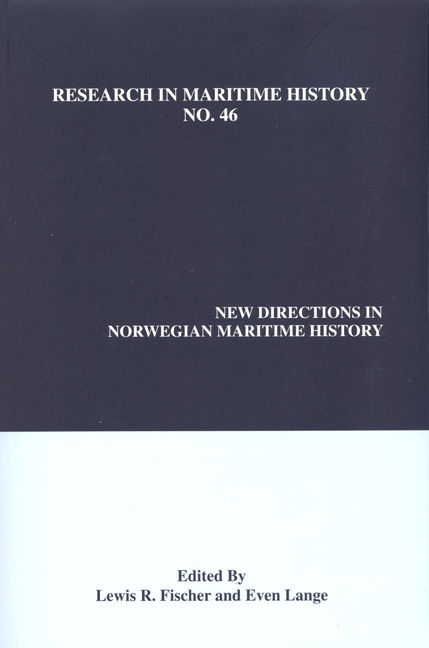Book contents
- Frontmatter
- Contents
- About the Editors
- Contributors' Notes
- Introduction
- Global Integration
- Political Issues
- “In a Peculiar Position: Merchant Seamen in Norwegian Health Policy, 1890-1940”
- “The Norwegian-American Line: State Incentives and Mediations with Dominant Market Players”
- “After the Boom: The Political Economy of Shipping in Norway in the Interwar Period”
- Success and Failure
“The Norwegian-American Line: State Incentives and Mediations with Dominant Market Players”
from Political Issues
- Frontmatter
- Contents
- About the Editors
- Contributors' Notes
- Introduction
- Global Integration
- Political Issues
- “In a Peculiar Position: Merchant Seamen in Norwegian Health Policy, 1890-1940”
- “The Norwegian-American Line: State Incentives and Mediations with Dominant Market Players”
- “After the Boom: The Political Economy of Shipping in Norway in the Interwar Period”
- Success and Failure
Summary
Introduction
On 7 June 1913, the eighth anniversary of Norwegian independence, the Norwegian- American Line's Kristianiafjord set sail from Bergen on its maiden voyage to New York. Among the numerous dignitaries on the first leg, which had started from Christiania (Oslo) three days earlier, were King Haakon VII, the Norwegian cabinet and most members of parliament. The inauguration of the Norwegian-American line had both national and international significance. From a national perspective, it marked the end of a decade-long process to gain entry for Norway in the transatlantic passenger business. At the same time, it brought Norwegian shipping for the first time into the most capitalintensive form of shipping: large passenger liners operating on the transatlantic passenger run. Moreover, Norway now had a sustainable passenger service connecting the country directly with the large Norwegian communities in the United States. The line was sustainable in that it was supported by state subventions and agreements with the dominant players in the transatlantic passenger trade. In an international context, the establishment of the Norwegian- American Line was significant because it was one of only a handful of new, independent transatlantic passenger companies established during a period (1900-1914) marked by collusion in the form of conferences, high barriers to entry and record numbers of passengers.
This essay will investigate how the Norwegian-American Line, despite national and international barriers, came into being from four key perspectives: how the initiatives were shaped, mediations with the Norwegian state, state incentives in the form of subsidies and negotiations with the dominant market players. In a broader international context, this will provide rare insights into the prerequisites, constraints and complex process of inaugurating capital-intensive shipping lines in general and transatlantic passenger lines in particular in the early part of the twentieth century. The investigation will be based primarily on Norwegian parliamentary reports (Stortingsforhandlinger), records of the Norwegian Ministry of Foreign Affairs and documents from the Atlantic Conference. It will comprise six parts. The first and second sections set the events in a wider context and provide an opportunity to reflect on the key contemporary structures of the transatlantic passenger business in general and for Norwegian overseas liner traffic in particular.
- Type
- Chapter
- Information
- New Directions in Norwegian Maritime History , pp. 101 - 124Publisher: Liverpool University PressPrint publication year: 2011



